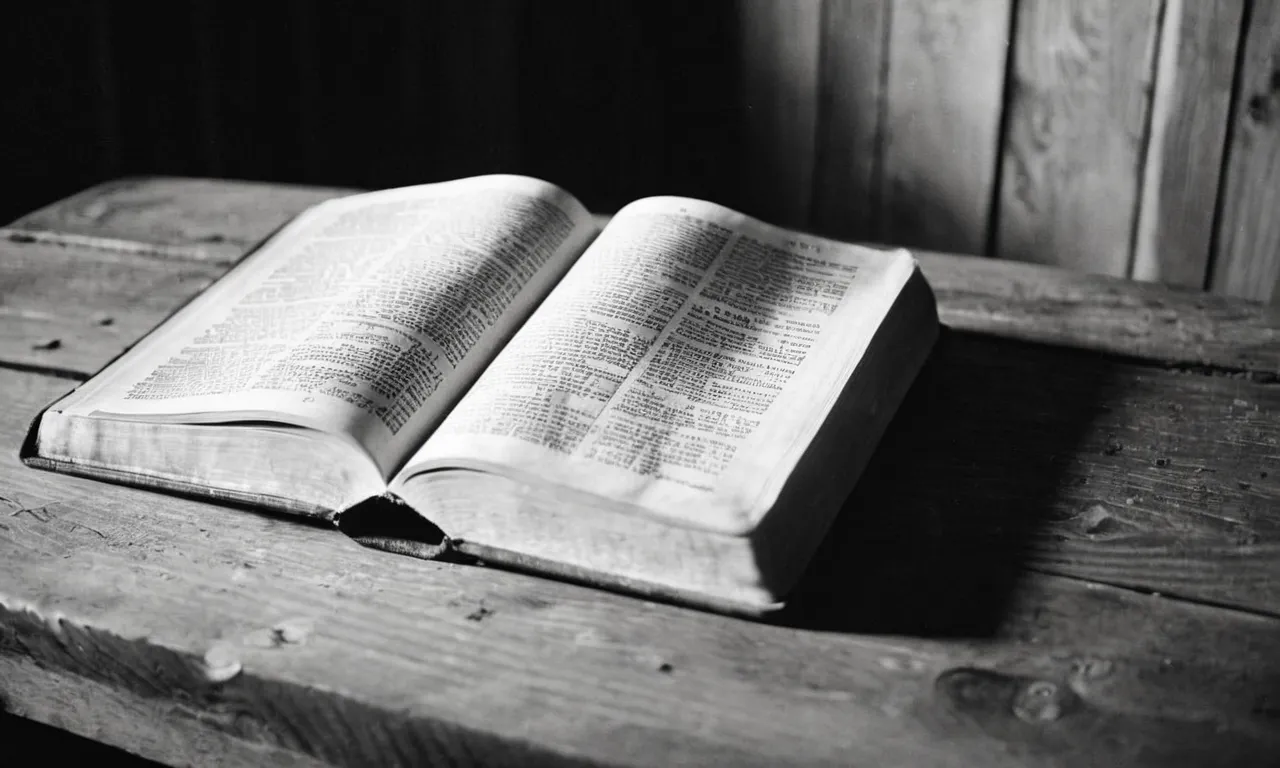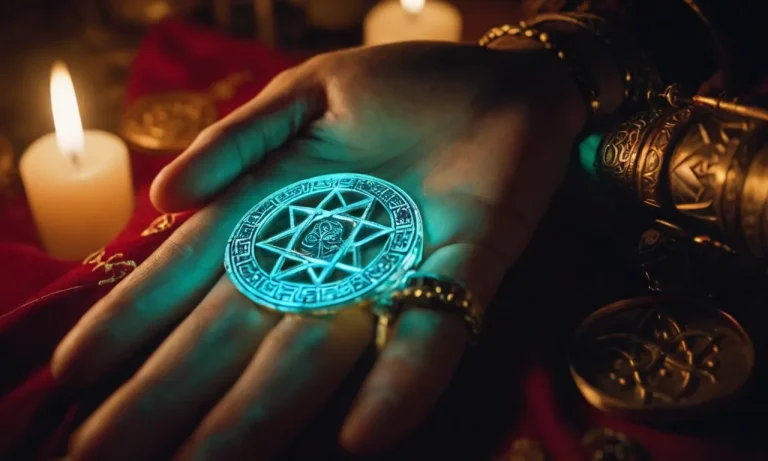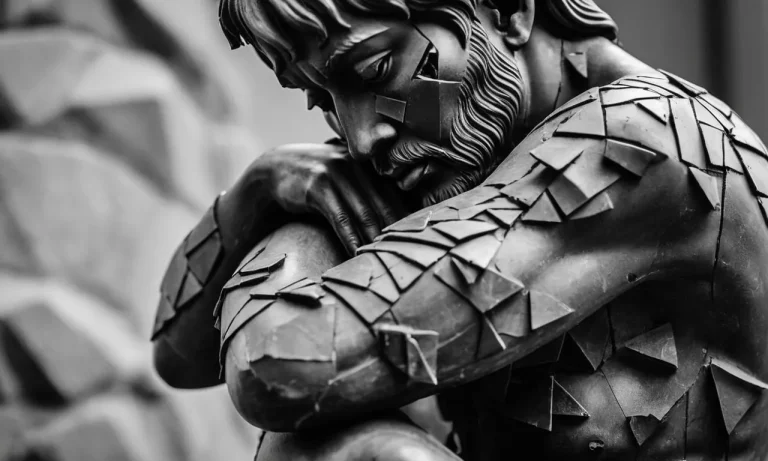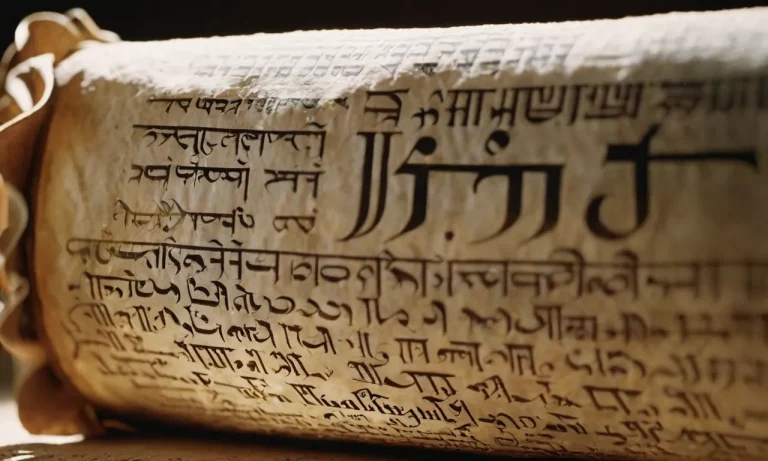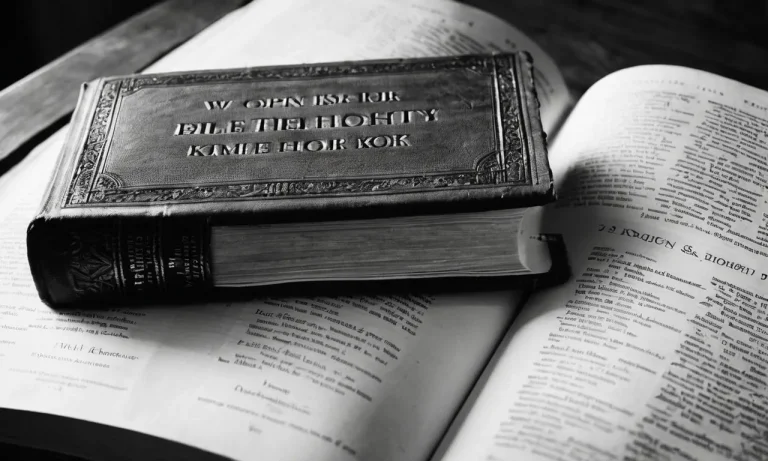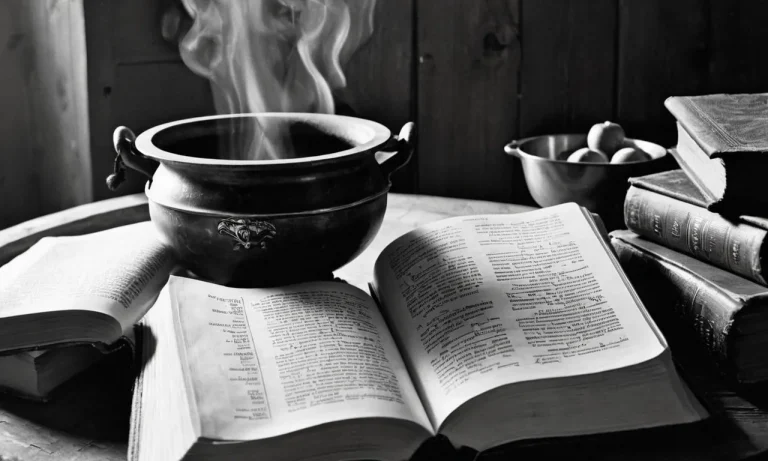Who Is The Bridegroom In The Bible?
The imagery of a bridegroom and bride is used throughout the Bible to represent the intimate and loving relationship between God and His people. If you’re short on time, here’s a quick answer: In the New Testament, Jesus Christ is portrayed as the bridegroom who will return one day for His bride, the Church.
In this comprehensive article, we will explore the biblical foundation for understanding Christ as the bridegroom. We’ll look at Old Testament backdrop that paves the way for this image, key passages in the Gospels and Revelation that directly call Christ the bridegroom, and the implications this has for followers of Jesus awaiting His return.
Old Testament Backdrop
God as Husband to Israel
In the Old Testament, God often portrayed Himself as a husband to Israel. This imagery was used to illustrate the covenantal relationship between God and His chosen people. God promised to care, provide, and protect Israel like a devoted husband (Isaiah 54:5).
However, Israel was often unfaithful and broke her covenant with God by worshipping other gods. The prophets, particularly Hosea, frequently used wedding imagery to rebuke Israel for her spiritual adultery and call her back to faithfulness towards God (Hosea 2:14-20).
Despite Israel’s flaws, God remained committed to restoring His relationship with her, just as a loving husband remains faithful to an unfaithful wife.
Prophets Use Wedding Imagery
The prophets often used wedding imagery when speaking about God’s relationship with Israel. Isaiah compared Israel to an unfaithful bride who would be restored (Isaiah 62:4-5). Jeremiah spoke of Israel as an adulterous wife who forsook her husband (Jeremiah 3:20).
Ezekiel portrayed Israel as an unwanted bride whom God took in and entered into a covenant with (Ezekiel 16:8). Hosea’s marriage to unfaithful Gomer illustrated God’s covenant with wayward Israel (Hosea 1-3).
This imagery highlighted God’s incredible faithfulness, patience, and forgiving love for His people, despite their repeated unfaithfulness. It also foreshadowed Christ’s self-sacrificing love for His bride, the Church.
Jesus as the Bridegroom
Jesus’ Use of Wedding Banquet Imagery
In the Gospels, Jesus frequently uses wedding imagery to refer to the coming of God’s kingdom. One example is in Matthew 22, where Jesus tells the parable of the wedding banquet. In this story, a king prepares a wedding banquet for his son, but the invited guests refuse to come.
So the king invites anyone who will come instead. Jesus concludes by saying that many are invited to the kingdom, but few accept the invitation.
Scholars see this parable as an image of Jesus as the bridegroom and the Church as his bride. The wedding banquet represents the consummation of their relationship when God’s kingdom arrives in fullness.
By using marital imagery, Jesus paints a picture of the intimate relationship he wants to have with his people. Yet the parable also warns that many will reject the invitation to be part of Christ’s bride.
Parables of Waiting Bridesmaids
In Matthew 25, Jesus tells the parable of the ten virgins waiting for the bridegroom to appear for his wedding feast. Five virgins are prepared with extra oil for their lamps, while five are foolishly unprepared when the bridegroom is delayed.
Jesus again associates himself with the bridegroom figure who arrives to initiate the wedding celebrations. The message is about being watchful and ready for Jesus’ Second Coming.
Similarly, in Luke 12:35-38 Jesus says his followers should “be like men waiting for their master to return from the wedding feast.” When he returns from the feast, Jesus says he will become like a servant and wait on those he finds still awake.
This ties in with the larger theme of reversals in Luke, where Jesus calls his followers to serve others humbly.
John the Baptist Calls Jesus the Bridegroom
The Gospel of John records John the Baptist using wedding imagery to describe Jesus’ identity and mission. In John 3:27-30, John the Baptist says, “The one who has the bride is the bridegroom. The friend of the bridegroom, who stands and hears him, rejoices greatly at the bridegroom’s voice.
Therefore this joy of mine is now complete. He must increase, but I must decrease.”
By identifying Jesus as the bridegroom, John the Baptist establishes his own identity as the “best man” or close friend of the groom. His role is to prepare the way for the groom and then step aside when the bridegroom appears to claim his bride.
As the forerunner of Christ, John fulfilled his mission by directing others to follow Jesus as Messiah.
The Church as the Bride of Christ
Paul Says Christ Loves the Church Like a Husband
In his letter to the Ephesians, the apostle Paul uses marriage as a metaphor to describe the relationship between Christ and the church. He writes, “Husbands, love your wives, just as Christ loved the church and gave himself up for her to make her holy” (Ephesians 5:25-27).
This powerful imagery emphasizes the intimacy and self-sacrifice that characterizes the bond between Jesus and his people.
Paul explains that Christ nourishes and tenderly cares for the church, his bride, helping her to mature in holiness and beauty. In response, the church submits to her husband Jesus, modeling the way wives submitted to husbands in New Testament cultures.
Through this metaphor, Paul underscores that the church belongs to Christ and is called to live in close relationship with him as a devoted bride.
Revelation Culminates the Imagery
The marriage metaphor comes to fruition in the climactic final book of the Bible. The apostle John records his vision of “the wedding of the Lamb” with his bride, the church (Revelation 19:7). This glorious marriage supper marks the final consummation of the unbreakable bond between Christ and his people.
Interestingly, John again uses the metaphor to portray the church as the heavenly Jerusalem coming down to earth “as a bride beautifully dressed for her husband” (Revelation 21:2). This bride imagery signifies the church’s beauty, purity, and readiness to unite with her Groom forever.
Throughout Scripture, marriage illustrates the tender, faithful love between the church and her Savior. This metaphor pictures the church as the treasured and adored bride of Christ. Hosea, Isaiah, Paul, and John extol the Lord’s covenant love for his people in marital terms.
surely, no image more clearly expresses Christ’s sacrificial, nurturing, intimacy, and enduring delight in his beloved church than that of bridegroom and bride.
Conclusion
The biblical authors use nuptial imagery to underscore the covenantal relationship between God and His people, ultimately finding its fulfillment in Christ and the Church. As the eagerly awaited bridegroom, Jesus is returning for His bride, the Church universal, who readies herself by living faithfully and awaiting His return.

